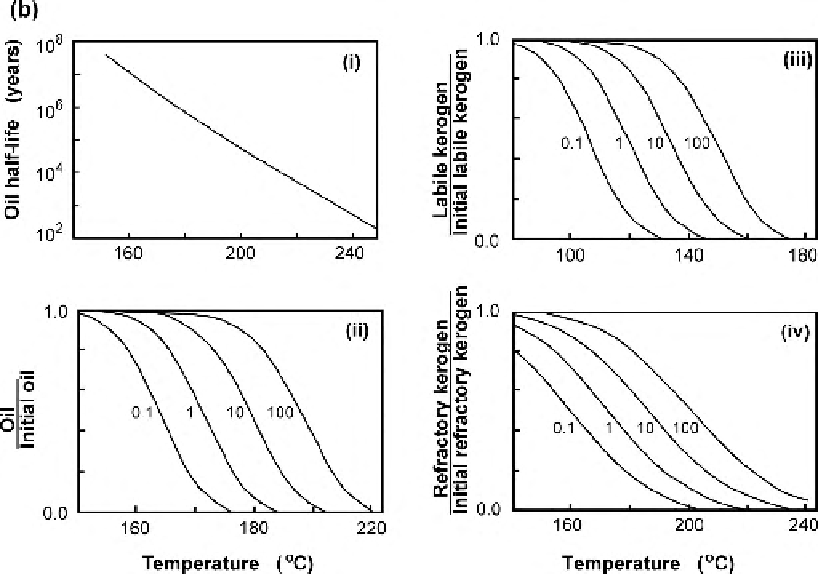Geoscience Reference
In-Depth Information
Figure 10.50.
(b) Calculated time and temperature dependences of kerogen
reactions. (i) Time taken to convert half a given mass of oil into gas at a given
temperature. (ii) The relative concentration of oil as a function of the maximum
temperature for heating rates of 0.1, 1, 10 and 100
◦
CMa
−1
. (iii) As in (ii) but for labile
kerogen. (iv) As in (ii) but for refractory kerogen. (From Quigley and McKenzie
(1988).)
geological timescales. However, the data and predictions of transformation rates
summarized here suggest that this widely used TTI approach may overestimate
the importance of time and underestimate the importance of temperature on
hydrocarbon maturation.
Slumps and slides on the continental slope
Continental rifting produces continental shelves and slopes. In the plate cycle,
volcanism and deformation at plate boundaries create relief. Erosion then reduces
the relief, depositing piles of debris on the continental shelf and slope. Often the
final stage is catastrophic failure of the piles, transporting the material down to
the deep ocean basin and so eventually to the subduction zones.
Evidence for catastrophic collapse of sediment piles is widespread. The
Amazon fan has repeatedly failed in giant submarine landslides, as have many
other large river fans (e.g. Nile, Rhone). Deltaic deposits are often rich in organic
material and from this gas develops, that in turn seeps up to accumulate in methane
hydrates (an ice-like material) below which pools of free gas are trapped. The

